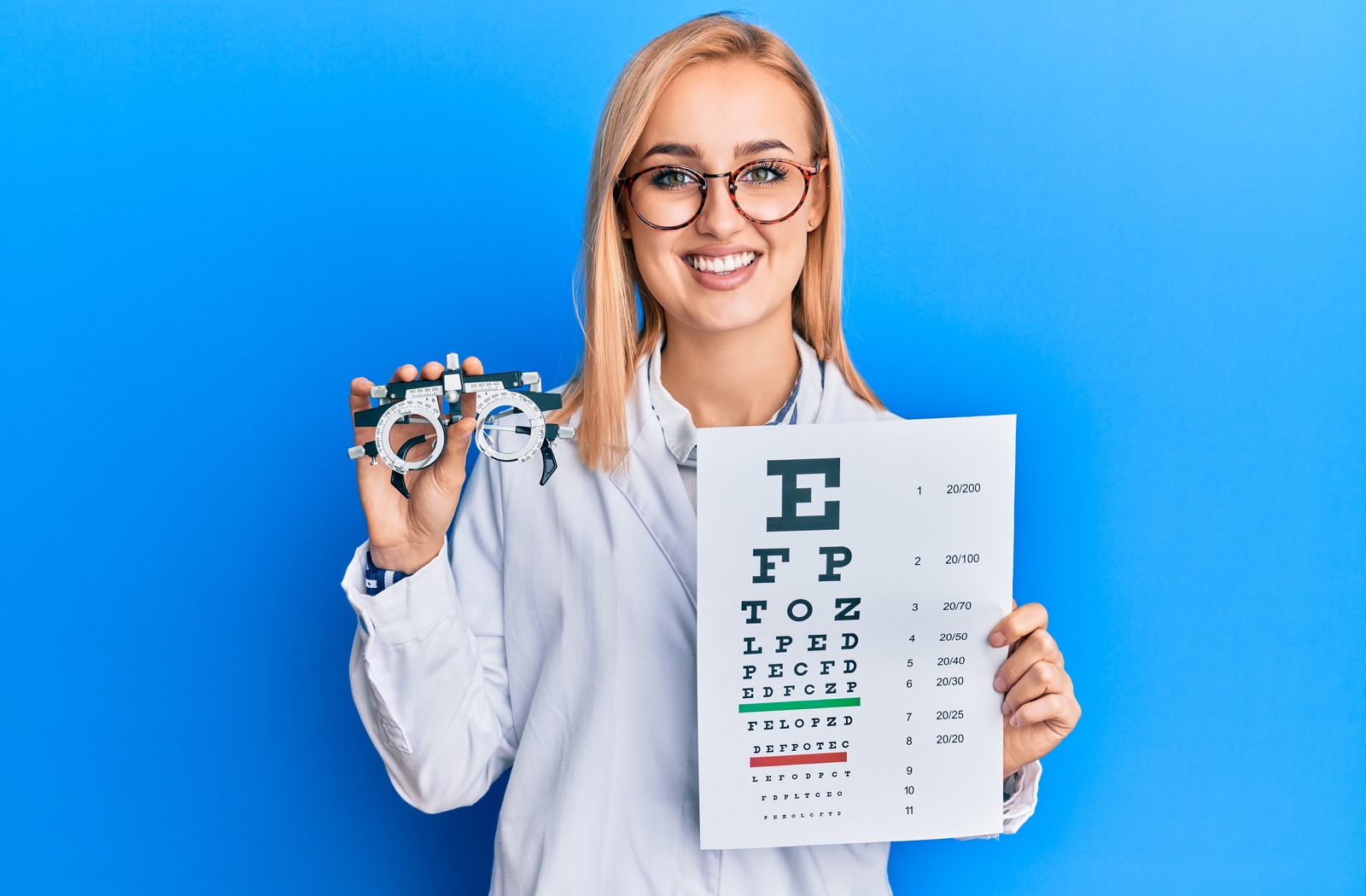Just How an Eye Doctor Can Change Your Vision Health in Chino
Just How an Eye Doctor Can Change Your Vision Health in Chino
Blog Article
Recognizing the Comprehensive Duty of an Optometrist in Modern Eye Care
In the developing landscape of medical care, the scope of an eye doctor's role has significantly broadened, expanding well past the confines of standard vision modification. With advancements in innovation and a raising emphasis on preventative care, optometrists are essential in detecting and handling persistent eye problems, while likewise participating in early condition detection. Their know-how in sophisticated diagnostic methods such as optical coherence tomography is very useful. Exactly how do these obligations converge with their role in advertising general eye wellness, and what does this mean for person results in a collective health care setting?
Expanded Extent of Technique
In recent years, the function of eye doctors has actually progressed dramatically, with several professionals now accepting a broadened range of method that extends beyond traditional eye exams. Their duties now encompass a broad array of solutions, consisting of prescribing drugs for eye conditions, taking care of persistent eye conditions, and executing small medical treatments.
Additionally, optometrists are now much more associated with collective treatment, functioning very closely with ophthalmologists, medical care physicians, and other healthcare experts to ensure alternative individual care. This interprofessional cooperation is crucial in managing complicated instances that need a multidisciplinary method. Additionally, eye doctors are playing an essential function in public health and wellness campaigns, such as vision testings and eye wellness education and learning, targeted at improving neighborhood health and wellness outcomes.
The increased range of practice for optometrists not just boosts their capability to supply comprehensive treatment however also addresses the growing need for available and reliable eye treatment services, adding to general health care enhancements.
Very Early Disease Detection
Early detection of eye conditions is significantly ending up being a centerpiece in the broadened function of optometrists. As primary eye treatment carriers, optometrists are distinctly placed to determine very early indicators of ocular problems such as glaucoma, macular deterioration, diabetic retinopathy, and cataracts. This crucial function is vital, as early medical diagnosis can substantially enhance the management and diagnosis of these problems, possibly stopping vision loss and improving person results.
Optometrists utilize extensive eye evaluations to find refined modifications in vision and eye health and wellness. These exams frequently consist of analyses of visual acuity, intraocular pressure, and retinal health and wellness. The capability to acknowledge early signs of systemic health and wellness problems, such as high blood pressure and diabetic issues, via ocular indications additionally highlights the value of routine eye examinations. Early intervention is not only useful in protecting vision however likewise in decreasing health care expenses related to sophisticated illness treatments.
In addition, eye doctors play a crucial function in client education and learning, stressing the value of regular eye evaluations as part of overall wellness upkeep. By fostering a proactive strategy to eye treatment, optometrists add considerably to public health and wellness, guaranteeing illness are caught and managed efficiently before they can advance.
Advanced Diagnostic Methods
Advanced diagnostic strategies have transformed the method of optometry, making it possible for specialists to detect and keep an eye on eye diseases with unmatched accuracy. Technologies such as optical coherence tomography (OCT) supply high-resolution, cross-sectional photos of the retina, facilitating early detection of problems like glaucoma and macular deterioration.
Another crucial improvement is digital retinal imaging, which catches extensive sights of the retina utilizing high-definition cameras. This technology is essential in identifying modifications in retinal framework gradually, thereby assisting in the management of problems like diabetic person retinopathy. Aesthetic area testing, enhanced by computer-aided systems, enables for accurate mapping of a client's line of vision, necessary in identifying and tracking glaucoma development.
Corneal topography, an additional notable diagnostic device, generates thorough maps of the cornea's surface. This is particularly useful in suitable call lenses and preparing refractive surgery. These innovative diagnostic methods jointly enable optometrists to offer positive, targeted treatment, making sure much better individual outcomes and strengthening their essential role in eye health administration.
Managing Persistent Eye Conditions
Handling persistent eye problems is a cornerstone of optometric treatment that requires a comprehensive understanding of various ocular illness and their long-lasting ramifications. Optometrists play a critical duty in managing, diagnosing, and surveillance conditions such as glaucoma, diabetic retinopathy, and age-related macular deterioration. These conditions, if left without treatment, can bring about substantial aesthetic impairment or blindness, highlighting the important value of continuous care and monitoring.
Eye doctors employ a range of diagnostic devices, from this source including optical coherence tomography (OCT), aesthetic area screening, and fundus photography, to analyze the development of these chronic problems. By very closely checking modifications in eye health and wellness, optometrists can change treatment strategies to reduce disease development. This might entail recommending medicines, recommending way of life alterations, or collaborating check my site with ophthalmologists for surgical treatments when required.

Duty in Preventive Care
Precautionary treatment is a fundamental element of optometry that focuses on preserving eye health and wellness and avoiding the onset of ocular diseases. Eye doctors play a critical function in very early detection and avoidance, employing routine eye assessments to determine risk aspects and subtle changes in eye health and wellness. Eye Doctor Optometrist. These exams are not just concerning vision adjustment however encompass a detailed analysis of eye features and frameworks, allowing the recognition of problems such as glaucoma, cataracts, and macular deterioration at an early stage
In addition to diagnostics, optometrists inform clients on way of living options that advertise eye health, such as appropriate nutrition, UV protection, and the relevance of regular eye examinations. They suggest on the correct usage of electronic devices to avoid digital eye stress, a growing worry in the electronic age. Optometrists also provide advice on protective glasses for leisure and occupational activities, reducing the danger of injury.
Precautionary eye care includes systemic health and wellness why not try this out issues that manifest in the eyes, such as diabetic issues and high blood pressure. By collaborating with other medical care professionals, optometrists add to alternative person care, highlighting the interconnectedness of systemic and ocular health and wellness. This proactive technique is important in guarding aesthetic acuity and overall well-being.
Verdict
Optometrists currently inhabit a critical function in modern-day eye care, characterized by a broadened extent that consists of detecting and handling persistent eye conditions, recommending drugs, and doing small surgical treatments (Opticore Optometry). Their competence in very early disease discovery is enhanced by advanced analysis techniques such as optical coherence tomography and digital retinal imaging. By emphasizing preventative care and individual education, optometrists contribute dramatically to general eye wellness, teaming up with other health care specialists to ensure thorough and efficient individual outcomes

In addition to diagnostics, eye doctors educate people on way of living choices that promote eye health, such as correct nutrition, UV defense, and the relevance of regular eye exams.Preventive eye care prolongs to systemic health and wellness problems that materialize in the eyes, such as diabetic issues and high blood pressure.Optometrists now occupy a crucial role in modern-day eye care, identified by an expanded extent that includes identifying and handling chronic eye conditions, prescribing drugs, and carrying out minor medical procedures.
Report this page